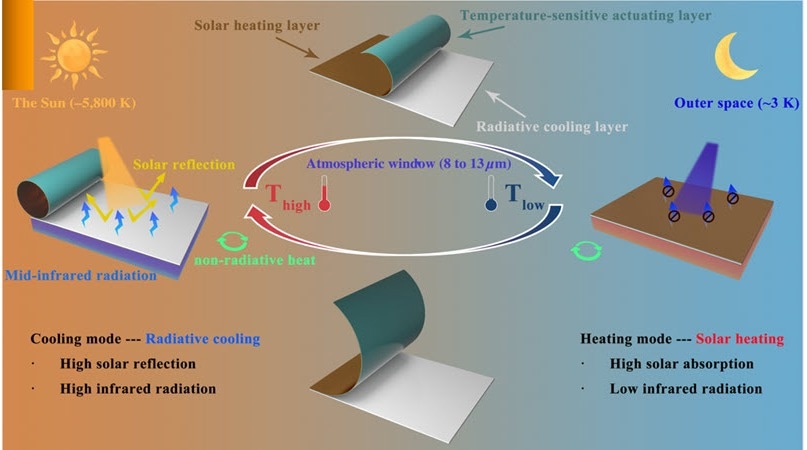One of the main challenges in reducing reliance on fossil fuels is the amount of energy that buildings currently consume for heating and cooling. A significant step toward sustainable building practices that assist in reducing or eliminating the use of fossil fuels for heating and cooling can be taken by utilizing less energy to heat and cool the buildings.
 The newly developed Zero-Energy Switchable Radiative Cooler (ZESRC) automatically switches modes with temperature changes, cooling under high temperatures, and heating under low temperatures. Image Credit: Chen, C., et al, doi 10.1117/1.JPE.14.028501
The newly developed Zero-Energy Switchable Radiative Cooler (ZESRC) automatically switches modes with temperature changes, cooling under high temperatures, and heating under low temperatures. Image Credit: Chen, C., et al, doi 10.1117/1.JPE.14.028501
A recent study from Wuhan University of Technology presented a useful invention in response to this problem: The Zero-Energy Switchable Radiative Cooler (ZESRC). The ZESRC is a smart gadget that uses no additional energy to maintain the proper temperature in buildings.
It functions by applying a unique technique based on the ways in which various materials expand under heat. Its simple operation to alternate between heating and cooling modes reduces energy consumption while preserving comfortable interior temperatures.
Field tests show that the ZESRC is effective in all seasons, with notable temperature reductions of up to 7.1° C in summer and increases of up to 7.5° C in winter compared to outdoor conditions, as reported in the SPIE Journal of Photonics for Energy (JPE).
Along with planning, constructing, and testing the ZESRC, the researchers also created a map that illustrates the ZESRC’s effectiveness in various climates. By using solar power for both heating and cooling, the ZESRC was able to save 14.3% of the energy used in buildings when compared to other devices. That is important because conserving energy allows to drastically lower the carbon footprint.
The research team’s future goals include testing the ZESRC design in various global climates and building types and optimizing it for better performance. As a workable and economical approach to indoor climate control, they anticipate that the ZESRC will be instrumental in assisting in the global endeavor to achieve net zero energy-related carbon dioxide emissions by 2050.
Journal Reference:
Chen, C., et al, (2024) Zero-energy switchable radiative cooler for enhanced building energy efficiency. Journal of Photonics for Energy. doi:10.1117/1.jpe.14.028501.
Source: https://spie.org/